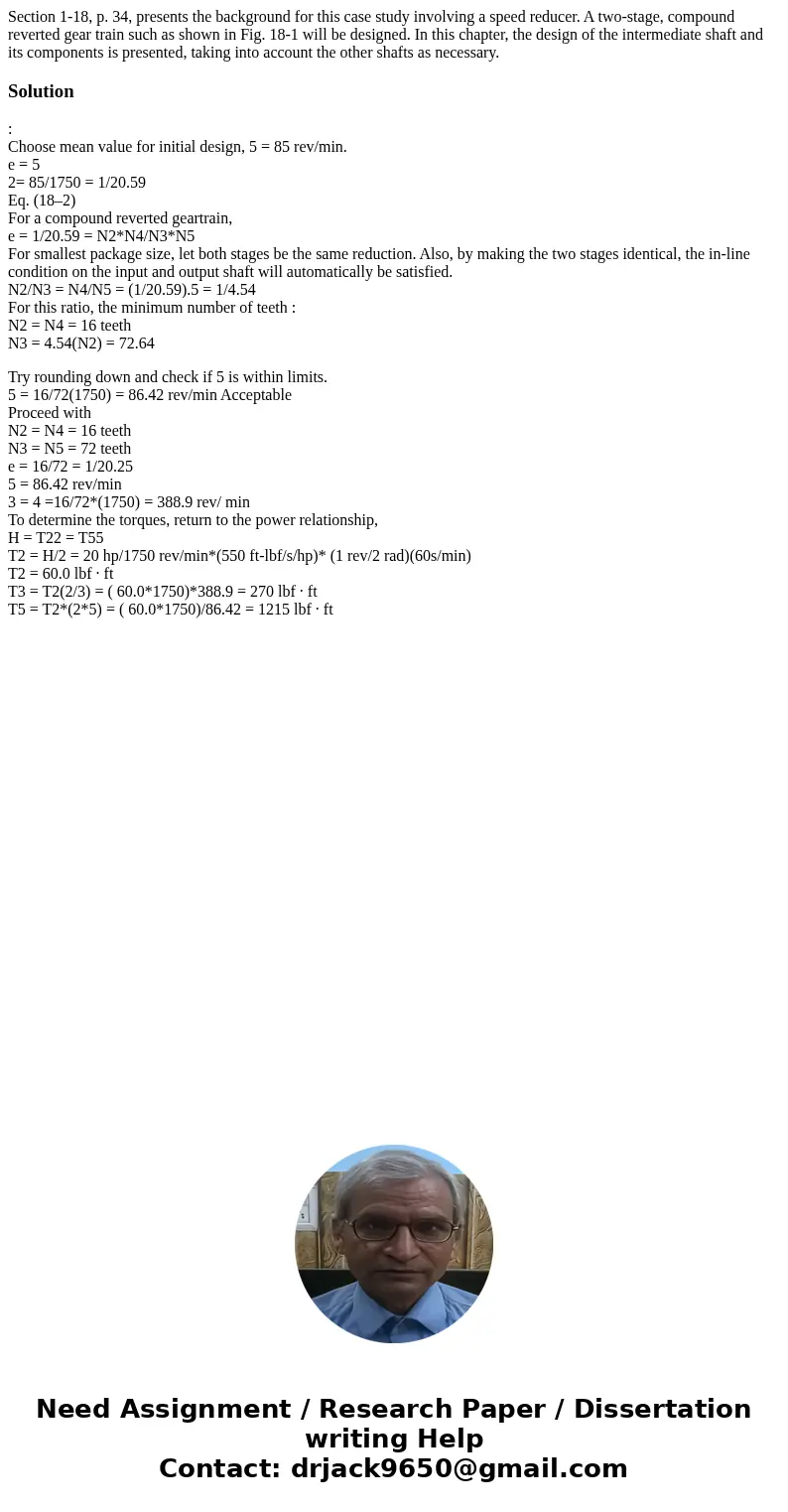Section 118 p 34 presents the background for this case study
Solution
:
Choose mean value for initial design, 5 = 85 rev/min.
e = 5
2= 85/1750 = 1/20.59
Eq. (18–2)
For a compound reverted geartrain,
e = 1/20.59 = N2*N4/N3*N5
For smallest package size, let both stages be the same reduction. Also, by making the two stages identical, the in-line condition on the input and output shaft will automatically be satisfied.
N2/N3 = N4/N5 = (1/20.59).5 = 1/4.54
For this ratio, the minimum number of teeth :
N2 = N4 = 16 teeth
N3 = 4.54(N2) = 72.64
Try rounding down and check if 5 is within limits.
5 = 16/72(1750) = 86.42 rev/min Acceptable
Proceed with
N2 = N4 = 16 teeth
N3 = N5 = 72 teeth
e = 16/72 = 1/20.25
5 = 86.42 rev/min
3 = 4 =16/72*(1750) = 388.9 rev/ min
To determine the torques, return to the power relationship,
H = T22 = T55
T2 = H/2 = 20 hp/1750 rev/min*(550 ft-lbf/s/hp)* (1 rev/2 rad)(60s/min)
T2 = 60.0 lbf · ft
T3 = T2(2/3) = ( 60.0*1750)*388.9 = 270 lbf · ft
T5 = T2*(2*5) = ( 60.0*1750)/86.42 = 1215 lbf · ft

 Homework Sourse
Homework Sourse